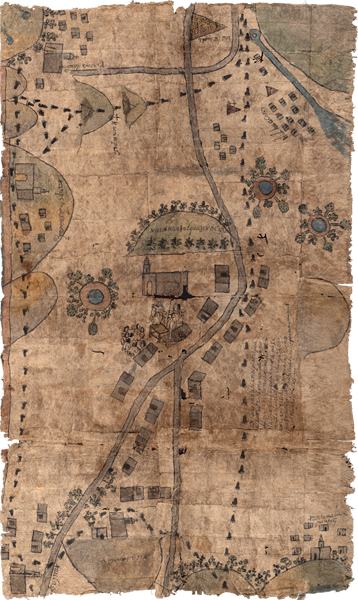cacique
This is a close-up of the cacique sitting in a chair at the open-air gathering outside the church of Tolcayuca. He is sketched in black ink, and he is not painted. He appears to wear clothing on his upper body, possibly a white cotton cape, which drapes over his arm. This would be a colonial clothing style. The cacique appears to hold a staff of office, which is a symbol of his authority. In Nahuatl his position could be that of tlatoani (plural: tlatoque). His sitting posture, in a chair, represents the adoption of European ways, although some indigenous men in prehispanic times and in some areas are known to have sat on stools. Nahua men normally sat on a mat with their knees up under their chins. Men’s slight elevation off the earth may be an indication of their association with the celestial realm (in constrast with women, who sat on the earth, indicating their relationship to the terrestrial realm).
cacique
Este es un detalle de un cacique sentado en una silla en la reunión al aire libre enfrente de la iglesia de Tolcayuca. Está delineado en tinta negra y no está pintado. Parece llevar puesto una prenda en el torso, posiblemente una capa de algodón blanco, que cae sobre su brazo. Esta prenda es típica del estilo colonial. El cacique parece estar sosteniendo un bastón, símbolo de autoridad. En Nahuatl, su posición sería tlatoani (plural:tlatoque). La postura sentado en una silla representa la adopción de costumbres europeas, aunque algunos indígenas en diversas areas en épocas prehispánicas también adoptaban esa postura. Los hombres Nahua comúnmente se sentaban en una pequeña alfombra con sus rodillas elevadas a la altura del mentón. La ligera elevación del hombre con respecto a la tierra puede indicar su asociación con el reino celestial (en contraste con las mujeres, que se sientan en el suelo indicando su relación con el reino terrestre).

